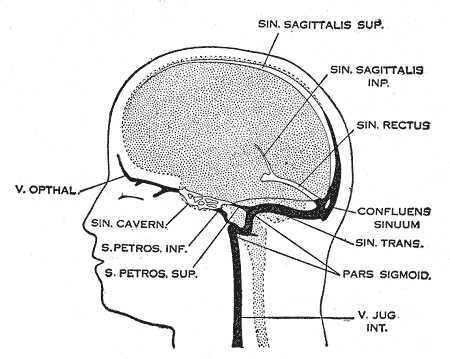|
|
| Line 29: |
Line 29: |
|
| |
|
| ==Treatment== | | ==Treatment== |
| Various studies have investigated the use of [[anticoagulation]] (suppression of blood clot formation) in cerebral venous sinus thrombosis. Before these trials, there was a concern that small areas of hemorrhage would bleed further as a result of treatment. The European Federation of Neurological Societies (EFNS) recommends [[heparin]] or [[low molecular weight heparin]] in the initial treatment, followed by [[warfarin]], provided there are no other bleeding risks that would make these treatments unsuitable.<ref name=EFNS/> The duration of warfarin treatment depends on the circumstances and underlying causes of the condition. If the thrombosis developed under temporary circumstances (e.g. pregnancy), three months are regarded as sufficient. If the condition was unprovoked but there are no clear causes or a "mild" form of thrombophilia, 6 to 12 months is advised. If there is a severe underlying thrombosis disorder, warfarin treatment may need to continue indefinitely.<ref name=EFNS/>
| |
|
| |
| [[Thrombolysis]] (removal of the blood clot with "clot buster" medication) has been described, either systemically by injection into a vein or directly into the clot during angiography. The 2006 EFNS guideline recommends that thrombolysis is only used in patients who deteriorate despite adequate treatment, and other causes of deterioration have been eliminated. It is unclear which drug and which mode of administration is the most effective. Bleeding into the brain and in other sites of the body is a major concern in the use of thrombolysis.<ref name=EFNS/>
| |
|
| |
| Raised intracranial pressure, if severe or threatening vision, may require therapeutic [[lumbar puncture]] (removal of excessive [[cerebrospinal fluid]]), medication ([[acetazolamide]]), or surgical treatment (optic nerve sheath fenestration or [[Cerebral shunt|shunting]]).<ref name=Stam2005/> In certain situations, anticonvulsants may be used prophylactically (i.e. to prevent seizures); these are focal neurological problems (e.g. inability to move a limb) and/or focal changes of the brain tissue on CT or MRI scan.<ref name=EFNS/>
| |
|
| |
|
| ==References== | | ==References== |
Revision as of 17:07, 24 July 2012
Editor-In-Chief: C. Michael Gibson, M.S., M.D. [1]
Keywords and synonyms: Cerebral venous thrombosis, cerebral sinus thrombosis, superior sagittal sinus thrombosis, dural sinus thrombosis and intracranial venous thrombosis
Overview
Pathophysiology
Epidemiology and Demographics
Risk factors
Natural History, Complications and Prognosis
Treatment
References
Template:WH
Template:WS
